Introduction Assisted Reproductive Technology (ART) stands as a beacon of hope for individuals and couples navigating the challenges of infertility. This comprehensive approach involves a myriad of medical procedures, each intricately designed to address the complexities of conception. In this detailed exploration, we delve into the nuances of ART, from its definition and types to
Introduction
Assisted Reproductive Technology (ART) stands as a beacon of hope for individuals and couples navigating the challenges of infertility. This comprehensive approach involves a myriad of medical procedures, each intricately designed to address the complexities of conception. In this detailed exploration, we delve into the nuances of ART, from its definition and types to the ethical considerations surrounding its use.
Definition
At its core, ART refers to a set of fertility treatments and procedures crafted to assist those facing difficulties or the inability to conceive children naturally. The intricate manipulation of eggs, sperm, or embryos constitutes the essence of Assisted Reproductive Technology, all aimed at amplifying the chances of a successful pregnancy.
Infertility Statistics
Before delving into the types of ART, it’s essential to understand the prevalence of infertility. Approximately 10% of women aged 15–44 in the United States grapple with challenges in conceiving or maintaining a pregnancy. On a global scale, 8–12% of couples encounter fertility problems, with nearly half of these cases attributed to factors affecting males.
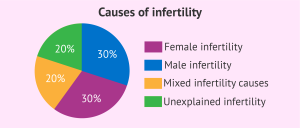
Image by: invitra.com
Types of ART
In Vitro Fertilization (IVF)
One of the most prevalent ART procedures is In Vitro Fertilization (IVF). This intricate process involves extracting eggs, fertilizing them in a controlled laboratory environment, and subsequently transferring resulting embryos into the uterus. Success rates vary significantly based on age, with younger individuals experiencing higher rates of success. However, this technological marvel comes at a cost, with the average price per IVF cycle ranging from $12,000 to $17,000.
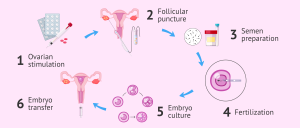
Image by: invitra.com
Intrafallopian Transfer
Intrafallopian Transfer methods, akin to IVF, utilize laparoscopic surgery to deliver gametes directly into the fallopian tube. Variants such as Gamete Intrafallopian Transfer (GIFT), Zygote Intrafallopian Transfer (ZIFT), and Pronuclear Stage Tubal Transfer (PROST) present alternative options. However, limited data on success rates and higher associated costs make these procedures less common in the realm of ART.
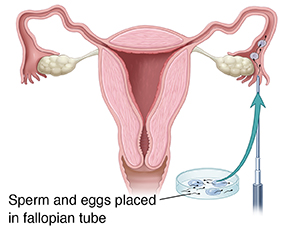
Image by: mountnittany.org
Frozen Embryo Transfer (FET)
The advent of Frozen Embryo Transfer (FET) has become increasingly prevalent in the United States. This technique involves thawing previously frozen embryos and implanting them into the uterus. While boasting a commendable 52% success rate, potential risks, including preterm birth, warrant consideration. The estimated cost of FET varies but can reach up to $6,000.

Image by: d3b3by4navws1f.cloudfront.net
Intracytoplasmic Sperm Injection (ICSI)
Intracytoplasmic Sperm Injection (ICSI) represents a sophisticated procedure often performed alongside IVF. Here, an embryologist delicately injects a single sperm directly into the center of an egg. While fertilization rates range between 50–80%, considerations such as potential egg damage and higher associated costs underscore the complexity of this add-on procedure.
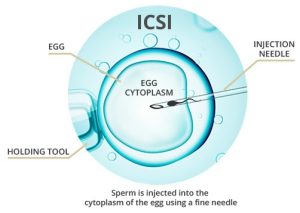
Image by: thebridgeclinic.com
Third-Party ART
The landscape of ART expands further with Third-Party ART, involving the donation of eggs, sperm, or embryos. This category extends to include surrogacy and gestational carriers, providing alternative avenues for those facing specific challenges. Success rates vary, and the financial investment can range from $1,000 for sperm donation to a substantial $60,000–$150,000 for surrogacy.
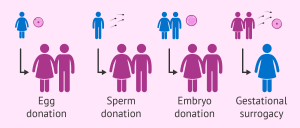
Image by: invitra.com
Preparation
Preparation for ART treatment extends beyond medical procedures. Individuals embarking on this journey often find success through proactive behavioral changes. Dietary modifications, recommended supplements, regular exercise, and the cessation of harmful habits collectively contribute to enhancing the chances of ART success. Prenatal care becomes paramount once pregnancy is achieved, ensuring the well-being of both the pregnant individual and the developing baby.
Ethics
The realm of ART is not devoid of ethical considerations. The multifaceted ethical landscape includes pondering the necessity of ART, questions of ownership regarding stored gametes and embryos, alignment with religious beliefs, age limits, and the right of children born through ART to know about their genetic parents. Navigating these ethical complexities requires a thoughtful examination, and the American Society for Reproductive Medicine offers a wealth of resources to guide individuals through these moral quandaries.
Conclusion
In conclusion, Assisted Reproductive Technology stands as a beacon of hope and advancement in the realm of fertility treatments. The diverse array of ART options provides individuals and couples with tailored solutions to navigate the intricate challenges of infertility. Choosing the right path involves a nuanced consideration of risks, benefits, and costs, guided by healthcare professionals and a deep understanding of the ethical dimensions surrounding ART. Armed with knowledge, individuals can embark on their reproductive journey with informed decisions and empowered choices.

















Leave a Comment
Your email address will not be published. Required fields are marked with *